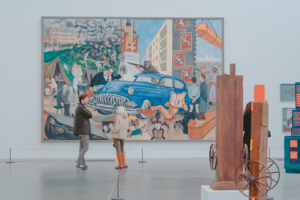Unlocking Creativity: Tips for Inspiring and Sustaining Digital Art Practices
Creativity is at the heart of digital art, fueling innovation and pushing boundaries. Unlocking and sustaining creativity in the digital art realm requires a combination of inspiration, technique, and a mindset open to experimentation. Whether you’re a seasoned digital artist or a beginner exploring the vast landscape of possibilities, here are some tips to help you unleash and maintain your creative spirit.
- Seek Inspiration Everywhere: Inspiration can be found in the most unexpected places. Explore diverse art forms, visit galleries, delve into nature, or immerse yourself in different cultures. Exposure to varied experiences can trigger new ideas and perspectives that you can infuse into your digital art.
- Embrace Technology as a Tool: While technology is a powerful enabler, it’s crucial to see it as a means to an end, not the end itself. Don’t get overwhelmed by the abundance of digital tools; instead, understand them as instruments to bring your creative vision to life. Experiment with different software, but always keep the focus on your artistic expression.

- Establish a Routine and Stay Disciplined: Creativity flourishes in a structured environment. Set aside dedicated time for your digital art practice, whether it’s daily, weekly, or according to your own rhythm. Consistency helps cultivate a creative mindset, making it easier to overcome creative blocks and explore new ideas.
- Collaborate and Share Ideas: Engage with fellow artists, join online communities, and participate in collaborative projects. Sharing ideas and perspectives not only enriches your creative process but also provides valuable feedback. Collaborations expose you to different styles, techniques, and approaches, broadening your creative horizons.
- Experiment with Different Styles and Techniques: Digital art offers a vast playground for experimentation. Don’t be afraid to step outside your comfort zone. Try new styles, explore different techniques, and mix traditional and digital mediums. The process of exploration often leads to unexpected and exciting creative discoveries.
- Stay Open to Critique and Learn from Feedback: Critique is a valuable tool for growth. Embrace constructive criticism as an opportunity to refine your skills and perspective. Be open to feedback from peers, mentors, or your audience. Learning from others’ insights can elevate your art and contribute to your ongoing creative development.
- Take Breaks and Recharge: Creativity requires mental and emotional energy. Don’t hesitate to take breaks when needed. Stepping away from your work allows your mind to recharge, preventing burnout. Sometimes, the most creative breakthroughs happen when you give yourself the space to relax and rejuvenate.
- Document Your Ideas: Creativity often strikes at unexpected moments. Keep a sketchbook or a digital notebook handy to jot down ideas, sketches, or fleeting thoughts. Documenting your creative impulses ensures that you have a rich source of inspiration to draw from when you’re ready to embark on a new project.
Unlocking and sustaining creativity in digital art is an ongoing journey, and every artist’s path is unique. By combining inspiration, discipline, and a willingness to explore, you can nurture a vibrant creative practice that evolves alongside your artistic vision.



